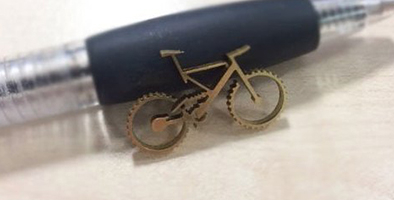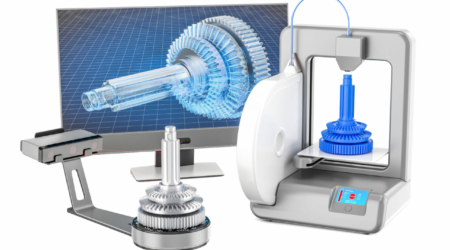Laser cutting is often seen as a risky business – so it’s no surprise that many people often believe that plastics have no place in the laser lab.
But this is actually a popular misconception. The truth of the matter is that laser technology has evolved leaps and bounds in recent years, meaning that the vast majority of plastics can now be treated using different laser technology.
So whether you have a passion for acrylics – or a burning love of PVC – then look no further. This blog will tell you everything you need to know about cutting plastics.
Thermosetting and Thermoplastics
There are two categories of plastics that are suitable for laser treatment: thermosetting and thermoplastic.
Thermosetting plastics strengthen during the heating process, but can’t be reheated then remoulded once the plastic has cooled down.
Thermoplastics, on the other hand, will soften when exposed to heat. This means they will actually strengthen as the temperature drops, and can be re-used and recycled multiple times.
Given the obvious differences between these two types of plastics, both thermosetting and thermoplastics require separate laser treatment.
Plastic Laser Cutting Technique
The range of laser cutting techniques for plastics is quite staggering. But here we’ll focus on two of the most popular methods: CO2 lasers and copper vapour lasers.
CO2 Lasers
CO2 lasers are the perfect choice for delicate cutting work – particularly thermoplastics. In fact, this type of technology is so sensitive that it’s used for medical procedures. This is a highly effective and efficient for treating plastics – and it has a number of advantages over its competitors.
The laser works by combining three different types of gases (carbon dioxide, nitrogen, and helium) which is then fed into a discharge tube. The gas then travels down the tube and is pumped out using the creatively-named mechanical forepump. An electric charge is produced during this process, and using a reflective mirror, the gas and electric current turns into a laser.
Now that you know the technicalities, we can talk about why CO2 laser cutting is a fantastic tool for treating thermoplastics.
This particular laser cutting tool is a popular alternative to other manufacturing tools. Acrylate polymers, for example, react especially well to CO2 laser cutting. Although a hand saw was often used in the past, this would often cause a rough finish and – in some cases – could prove dangerous.
CO2 lasers, however, provide acrylate polymers with a polished edge that looks and feels much more appealing.
Similarly, polycarbonates are also suited to the CO2 laser cutting process – resulting in another fully-sealed and smooth finish, making it a popular choice.
Copper Vapour Laser
Another common plastic cutting technique involves using a copper vapour laser.
This incredible technology is produced especially for micromachining – e.g. small laser cutting tasks that require supreme accuracy and precision.
Copper vapour lasers apply discrete wavelengths directly to the plastic’s surface – eventually reaching boiling point and producing a micro-keyhole. These keyholes are sometimes no wider than the diameter of a human hair, meaning that copper vapour lasers achieve remarkable accuracy in only a short time.
Plastic Laser Engraving
Given the precision capability of plastic cutting, you can probably guess that plastic laser cutting is becoming an increasingly popular choice for businesses who require engraving.
From PVC, to acrylic, and lamicoid, there are a wide range of plastics that can be treated using laser cutting.
We’ve already seen that acrylate polymers react particularly well to specialised laser cutting. But it’s worth pointing out that this isn’t the case for every plastic – most notably styrene. This plastic will deform or ripple when exposed to extreme heat. However, from an engraving perspective, that doesn’t completely negate the use of a laser cutting machine – providing the engraving isn’t too deep.
Plastic Types
There are a number of plastics that can be laser cut, although each will require individual treatment based on their unique properties.
Here is a quick run-through of the most commonly treated plastics.
Acrylic
As previously stated, once acrylic has been laser cut, it will produce a fine, polished edge.
Frosted, clear and tinted acrylic also performs particularly well under laser cutting – often producing superior edge quality. Regardless of the colour, a laser cutter can be set up to create some of the finest levels of detail.
Polyester film
Polyester film is being used more in various industries, so it is important that laser technology can keep up too.
Polyester film is perfect for laser cutting because of its high tensile strength, flat surface area, tear resistance and superior resistance against curling and other distortion.
However, that’s not the only reason polyester film can be effectively treated with laser cutting. It’s also possible to add a special coat to make polyester finer-tuned for laser treatment. The coating allows a stack of sheets to be cut without the film accidently being welded.
Being able to create multiple copies in a short period of time makes larger jobs that bit easier.
Polypropylene
A flexible yet tough material that can be easily fabricated, Polypropylene is a popular option. It is fairly similar to acrylic, but the main difference is that it’s much thicker and can sometimes be trickier to cut for complicated art designs.
In most cases, this material will also need a protective backing to reduce the likelihood of heat damage. After the cut has been done it is left with a smooth edge.
Subcon Laser and Our Plastic Laser Cutting Service
In the past, there’s been lots of popular misconceptions about laser cutting plastics.
However, as this blog demonstrates, there’s plenty of plastics that can be treated using laser technology. It just depends on the material itself and which laser process is most appropriate.
If you have any questions about our plastic laser cutting services, or anything else, get in contact on 024 7664 2221. You can also join the conversation on Twitter: @Subconlaser









